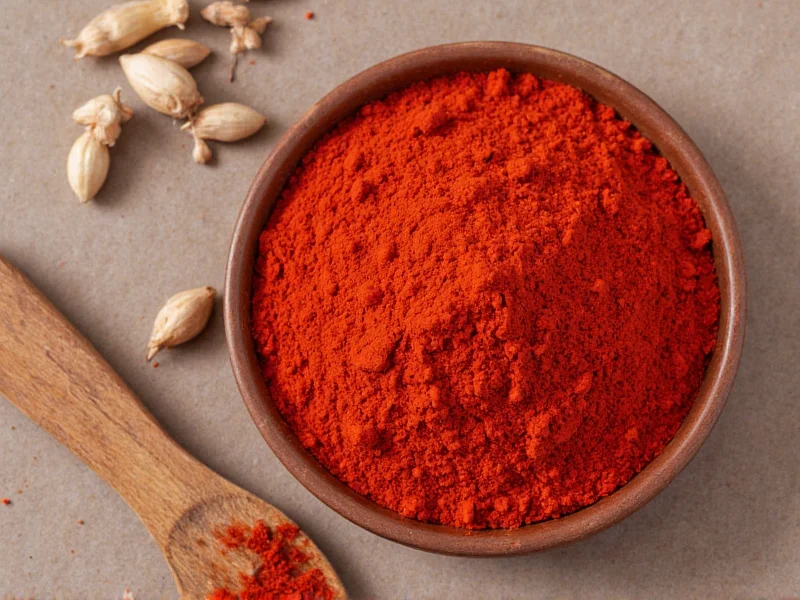When you're in the middle of cooking and realize you've run out of paprika, knowing reliable alternatives can save your recipe. Paprika serves multiple purposes in cooking—it adds color, provides subtle sweetness, and can contribute mild to significant heat depending on the variety. Understanding what aspect of paprika your dish requires will help you choose the most appropriate substitute.
Understanding Paprika's Role in Cooking
Paprika isn't just a single spice but comes in several varieties, each serving different culinary functions. Sweet paprika offers vibrant color and mild pepper flavor without heat. Hot paprika provides both color and noticeable spiciness. Smoked paprika delivers that distinctive barbecue-like smokiness essential in many Spanish and Hungarian dishes. Before selecting a substitute, identify which characteristic matters most for your specific recipe.
Top Paprika Substitutes by Variety
| Paprika Type | Best Substitute | Substitution Ratio | Best For |
|---|---|---|---|
| Sweet Paprika | Chili powder + pinch of cayenne | 1:1 | Color and mild flavor in goulash, deviled eggs |
| Smoked Paprika | Chipotle powder | 1:0.5 | Paella, barbecue recipes, roasted vegetables |
| Hot Paprika | Cayenne pepper | 1:0.25 | Spicy stews, chorizo seasoning, hot sauces |
| Sweet Paprika (color focus) | Tomato powder | 1:1.25 | Dishes where color matters more than flavor |
Detailed Substitute Options
Chili Powder as Paprika Replacement
Chili powder makes an excellent substitute for sweet paprika in most recipes. While commercial chili powder contains additional spices like cumin and garlic powder, these actually complement rather than detract from most dishes that call for paprika. When substituting chili powder for sweet paprika, use it in a 1:1 ratio. This works particularly well in what to use instead of paprika for chicken recipes, as the additional spices enhance poultry dishes.
Cayenne Pepper for Hot Paprika
When your recipe specifically calls for hot paprika, cayenne pepper provides the closest heat profile. However, cayenne is significantly hotter, so use only one-quarter the amount of cayenne compared to the hot paprika quantity specified. This substitution works perfectly for what replaces paprika in spicy sausage recipes or when making authentic Hungarian dishes that require heat.
Chipotle Powder for Smoked Paprika
Smoked paprika's unique flavor comes from peppers dried over oak fires. Chipotle powder, made from smoked jalapeños, provides a similar smoky profile though with more heat. Use chipotle powder at half the quantity of smoked paprika called for in your recipe. This substitute shines in what to use when you run out of smoked paprika for paella or barbecue rubs. For a milder option, combine regular paprika with a few drops of liquid smoke.
Bell Pepper Powder Alternative
For the most authentic sweet paprika substitute, bell pepper powder offers the closest flavor profile without adding heat. You can make your own by dehydrating bell peppers and grinding them into a fine powder. This works exceptionally well as what replaces paprika in dishes where color matters most, like deviled eggs or potato salads. The substitution ratio is 1:1, though homemade versions may vary in intensity.
Recipe-Specific Substitution Guide
Not all paprika substitutes work equally well across different dishes. Consider these specific recommendations when looking for what to substitute for paprika based on your recipe:
- For goulash or stews: Use chili powder at a 1:1 ratio for sweet paprika, or add a pinch of cayenne if you need heat
- For deviled eggs: Tomato powder works best to maintain the vibrant color without altering flavor
- For paella: Chipotle powder at half strength preserves the essential smokiness
- For rubs and marinades: Combine equal parts chili powder and garlic powder for complex flavor
- For soups: A small amount of tomato paste can provide color when paprika is unavailable
Storage Tips for Paprika Substitutes
Like paprika itself, substitutes lose potency over time. Store all ground spices in airtight containers away from light and heat. For best results when using what replaces paprika in your cooking, replace your spice substitutes every 6-12 months. Whole peppers that you might grind yourself (like dried chilies for making chipotle powder) maintain freshness longer—up to 2 years when stored properly.
Creating Your Own Custom Paprika Blend
If you frequently cook dishes requiring paprika, consider making your own custom blend. Combine equal parts sweet bell pepper powder, a small amount of cayenne for heat (optional), and smoked pepper powder (optional) based on your preferred variety. This approach gives you control over what to use instead of store-bought paprika while ensuring freshness. Properly stored in the freezer, homemade blends maintain potency for up to 18 months.











 浙公网安备
33010002000092号
浙公网安备
33010002000092号 浙B2-20120091-4
浙B2-20120091-4